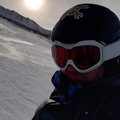Eric Utley will host the Hack Chat on Wednesday, May 24 at noon Pacific.
Time zones got you down? Try our handy time zone converter.
Like a lot of enabling technologies, 3D printing has had a strange trajectory. It started out as a laboratory oddity, moved on to industrial applications, and finally filtered down to the DIY set, first as scratch-built machines and later as inexpensive commodity printers that can be found almost anywhere. Pretty much everyone who needs a 3D printer now has one.
Not all additive manufacturing technologies are created equal, though, and there are plenty of applications for 3D printed parts where FDM just won't cut it. Luckily, any of us can get access to the latest and greatest manufacturing technologies through job houses that specialize in everything from metal 3D printing to sheet metal fabrication, CNC machining, and even small-run injection molding. We may not be able to afford any of the machines, but in a lot of cases we can afford to rent time of them and get high-quality parts quickly.
But that raises another question: Is my design ready for manufacturing? What works on an Ender on your shop bench might not quite translate to the latest SLS printer, and sending off an iffy design could just end up wasting time and money. Whether you're sending your designs out and running them up on your own printer, you want to know what you're doing will work. That's why we've asked Eric Utley, an applications engineer with Protolabs, to stop by the Hack Chat. With 12 years of additive manufacturing experience, he'll be able to help you tune up your designs and make sure they're ready to print.




If you're interested in creating a design for a 3D Printing Hack Chat, one option is to develop a logo or visually captivating graphic that embodies the chat's theme. Here's a step-by-step guide to help you approach the design process:
Conceptualize: Consider the fundamental elements and concepts associated with 3D printing and hack chats. Ponder symbols, icons, or imagery that symbolize these ideas. Brainstorm various design concepts and sketch initial ideas on paper.
Software: Utilize 3D modeling software or graphic design software to craft your design. Depending on the complexity of your vision, options like Autodesk Fusion 360, Blender, Adobe Illustrator, or Canva may be suitable.
Typography: Choose an appropriate font or typography style for the textual elements in your design. Select a font that complements the overall theme and effectively conveys the desired tone, whether it's professional, technical, or playful.
Graphics and Icons: Integrate relevant graphics or icons into your design. You can create your own or find existing 3D printing-related icons or symbols that represent hack chats or collaboration.
Colors: Select a color scheme that aligns with the chat's theme. Opt for a combination of colors that are visually appealing and enhance the overall design. Pay attention to the contrast between the background and foreground elements to ensure readability.
Composition: Arrange the design elements in a visually balanced and aesthetically pleasing manner. Experiment with different layouts and compositions to find the arrangement that best communicates your intended message.
Mockups and Previews: Create mockups or preview renderings of your design to visualize how it would appear in various contexts, such as social media banners, website headers, or promotional materials.
Iteration and Feedback: Seek feedback from others, particularly individuals within the Hack Chat community or those with design experience. Iterate on your design based on their suggestions and refine it until you're satisfied with the final outcome.
Export and Share: Export your design in the appropriate file format, such as PNG or JPEG, at an adequate resolution for online or print use. Share your design with the Hack Chat community or utilize it as a visual representation for the chat.
Remember to honor any branding guidelines or copyright restrictions if you're creating the design for a specific organization or event. Enjoy the creative process and have fun bringing your design to life!